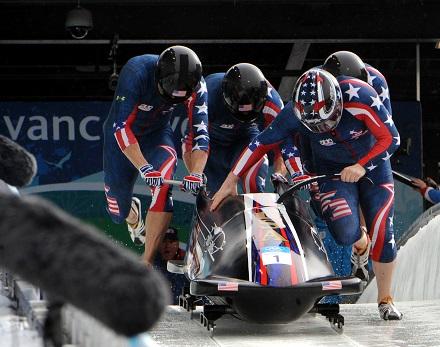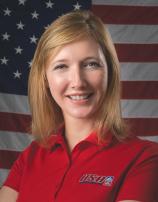
 The United States Bobsled & Skeleton Federation (USBSF) is the official national governing body for bobsled and skeleton in the United States. It serves as the American representative for the Federation Internationale de Bobsleigh et de Tobogganing (FIBT), the international governing body, and is chartered by the United States Olympic Committee.
The United States Bobsled & Skeleton Federation (USBSF) is the official national governing body for bobsled and skeleton in the United States. It serves as the American representative for the Federation Internationale de Bobsleigh et de Tobogganing (FIBT), the international governing body, and is chartered by the United States Olympic Committee.
Sports Destination Management: USA Bobsled Skeleton did well in Sochi.
Amanda Bird: Yes – Team USA Bobsled had four medals: Steve Holcomb’s bronze medals in both two-man and four-person, as well as Elana Meyers Taylor’s silver and Jamie Greubel Poser’s bronze in the women’s discipline. Team USA Skeleton concluded the Sochi Olympic Games led by Noelle Pikus-Pace’s silver and Matt Antoine’s bronze medal.
SDM: Are you hoping for those kind of results in PyeongChang as well?
Bird: As the squad readies itself for 2018 and its next chapter, it will look to build upon the success it has seen. There is a large field of very capable athletes and they will be looking to add to the medal totals from last time.
SDM: Bobsled and skeleton require, obviously, very specialized venues. There aren’t many of them.
Bird: Yes, as you can imagine, bobsled and skeleton tracks aren’t very common at all. They can’t be constructed just anywhere, like a basketball gym or a baseball field. In fact, there are still continents that don’t have them at all -- Africa, Antarctica, Australia and South America. Until the construction of the sliding center in PyeongChang, the tracks in Sochi, Russia, and Nagano, Japan, were the only two in Asia. The United States, a country which has dominated recent bobsled and skeleton Olympic events, has only two tracks (Lake Placid, New York and Park City, Utah.) The FIBT currently recognizes only 16 tracks around the world that are sanctioned to host FIBT competition and training. Those tracks are listed on our website.
 SDM: In 2017, we lost bobsled pilot Steve Holcomb, one of Team USA’s medalists. How has it changed the face of the team?
SDM: In 2017, we lost bobsled pilot Steve Holcomb, one of Team USA’s medalists. How has it changed the face of the team?
Bird: Justin Olsen won an Olympic gold medal as a brakeman for Steve Holcomb in 2010. In 2015, Olsen switched to driving and is now considered one of the top emerging American pilots. He has earned six North American Cup medals in his first two seasons driving before making his first World Cup appearance as a pilot in 2016-2017.
SDM: Are there other great stories?
Bird: Yes. Chris Kinney has one of the more interesting stories on the men’s bobsled team. A push athlete primarily for Codie Bascue, Kinney is half-Japanese and grew up highly involved in Japanese culture. He is fluent in Japanese and before becoming a bobsledder, ran professionally in Japan. He is also a former All-American hurdler for Georgetown University. On the women’s side, Elana Meyers Taylor and Jamie Greubel Poser are back, and so are Aja Evans and Lauren Gibbs.
SDM: Elana Meyers Taylor was the highest-level USA medalist in women’s bobsled last time, having won a silver.
Bird: Yes, and she has also been working toward greater gender equality in bobsled since then by competing in the four-person event with three male brakemen.
SDM: What can you tell us about the skeleton athletes?
Bird: Our team this year is Katie Uhlaender, Kendall Wesenberg, Matt Antoine and John Daly. John Daly, by the way, if he succeeds at the PyeongChang Games, will cap one of the greatest comeback stories the sport has seen in recent years. After popping a groove at the 2014 Games to put him out of medal contention, Daly thought he was done with skeleton. He decided to come back however, and began competing on the North American Cup circuit. Now he’s on the Olympic team. SDM

